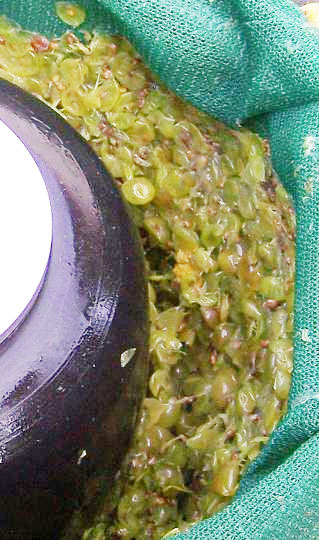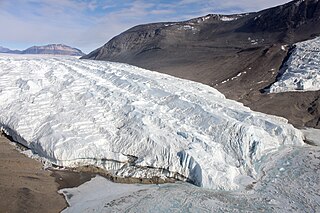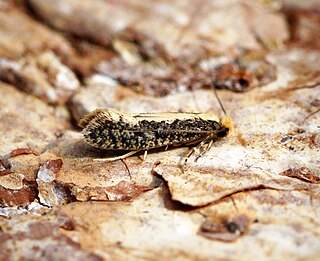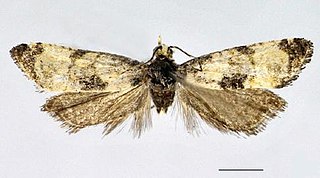
The Sirenia, commonly referred to as sea cows or sirenians, are an order of fully aquatic, herbivorous mammals that inhabit swamps, rivers, estuaries, marine wetlands, and coastal marine waters. The extant Sirenia comprise two distinct families: Dugongidae and Trichechidae with a total of four species. The Protosirenidae and Prorastomidae families are extinct. Sirenians are classified in the clade Paenungulata, alongside the elephants and the hyraxes, and evolved in the Eocene 50 million years ago (mya). The Dugongidae diverged from the Trichechidae in the late Eocene or early Oligocene.

Copra is the dried, white flesh of the coconut from which coconut oil is extracted. Traditionally, the coconuts are sun-dried, especially for export, before the oil, also known as copra oil, is pressed out. The oil extracted from copra is rich in lauric acid, making it an important commodity in the preparation of lauryl alcohol, soaps, fatty acids, cosmetics, etc. and thus a lucrative product for many coconut-producing countries. The palatable oil cake, known as copra cake, obtained as a residue in the production of copra oil is used in animal feeds. The ground cake is known as coconut or copra meal.

An alluvial fan is an accumulation of sediments that fans outwards from a concentrated source of sediments, such as a narrow canyon emerging from an escarpment. They are characteristic of mountainous terrain in arid to semiarid climates, but are also found in more humid environments subject to intense rainfall and in areas of modern glaciation. They range in area from less than 1 square kilometer (0.4 sq mi) to almost 20,000 square kilometers (7,700 sq mi).

Pomace, or marc, is the solid remains of grapes, olives, or other fruit after pressing for juice or oil. It contains the skins, pulp, seeds, and stems of the fruit.
Debris is rubble, wreckage, ruins, litter and discarded garbage/refuse/trash, scattered remains of something destroyed, or, as in geology, large rock fragments left by a melting glacier, etc. Depending on context, debris can refer to a number of different things. The first apparent use of the French word in English is in a 1701 description of the army of Prince Rupert upon its retreat from a battle with the army of Oliver Cromwell, in England.

Alveolar osteitis, also known as dry socket, is inflammation of the alveolar bone. Classically, this occurs as a postoperative complication of tooth extraction.

The Taylor Glacier is an Antarctic glacier about 54 kilometres (34 mi) long, flowing from the plateau of Victoria Land into the western end of Taylor Valley, north of the Kukri Hills, south of the Asgard Range. The middle part of the glacier is bounded on the north by the Inland Forts and on the south by Beacon Valley.

In forest ecology, a snag refers to a standing, dead or dying tree, often missing a top or most of the smaller branches. In freshwater ecology it refers to trees, branches, and other pieces of naturally occurring wood found sunken in rivers and streams; it is also known as coarse woody debris. Snags provide habitat for a wide variety of wildlife but pose hazards to river navigation. When used in manufacturing, especially in Scandinavia, they are often called dead wood and in Finland, kelo wood.

The yellow-billed spoonbill is a gregarious wading bird of the ibis and spoonbill family, Threskiornithidae. It is native to Australia, and is a vagrant to New Zealand, Lord Howe Island and Norfolk Island.

Fish meal is a commercial product made from whole wild-caught fish, bycatch, and fish by-products to feed farm animals, e.g., pigs, poultry, and farmed fish. Because it is calorically dense and cheap to produce, fishmeal has played a critical role in the growth of factory farms and the number of farm animals it is possible to breed and feed.

The silver mountain vole is a species of rodent in the family Cricetidae. They are distinguished by their silver-grey pelage, long vibrissae, rootless hypsodont molars and angular skull shape. Like many mammals of the Eurasian Steppe eco-region, they are well adapted to life in high altitudes, and can be found in mountain areas of Central Asia from Saur Mountains in the north-east to Kugitang Range in the west, and to Tibet and the Himalayas in the south.

A kitchen scraper is a kitchen implement made of metal, plastics, wood, rubber or silicone rubber. In practice, one type of scraper is often interchanged with another or with a spatula for some of the various uses.

Monopis laevigella, the skin moth, is a species of tineoid moth. It belongs to the fungus moth family (Tineidae), and therein to the nominate subfamily Tineinae. It is the type species of the genus Monopis and its junior objective synonym Hyalospila. As with the common clothes moth, earlier authors frequently misapplied the name Tinea vestianella to the present species.

Monopis crocicapitella, the pale-backed clothes moth, is a moth of the family Tineidae described by James Brackenridge Clemens in 1859. It has a nearly cosmopolitan distribution. It was first described from the eastern United States. It is particularly destructive of fabric and clothes.

Earias insulana, the Egyptian stemborer, Egyptian bollworm, spiny bollworm or cotton spotted bollworm, is a moth of the family Nolidae. The species was first described by Jean Baptiste Boisduval in 1833. It is found in most of Africa, southern Europe, the Near East and Middle East, Japan, Taiwan, the Philippines, Australia and Hawaii. It is a rare in immigrant in Great Britain.

Sea cucumber stocks have been overexploited in the wild, resulting in incentives to grow them by aquaculture. Aquaculture means the sea cucumbers are farmed in contained areas where they can be cultured in a controlled manner. In China, sea cucumbers are cultured, along with prawns and some fish species, in integrated multi-trophic systems. In these systems, the sea cucumbers feed on the waste and feces from the other species. In this manner, what would otherwise be polluting byproducts from the culture of the other species become a valuable resource that is turned into a marketable product.

Cochylis dubitana, the little conch, is a moth of the family Tortricidae. It is found in China (Heilongjiang) and most of Europe. and the Caucasus. It is also found in North America, where it has been recorded from Colorado, Maine, Ontario and Washington.

Symmoca is a genus of moths in the family Autostichidae.

Platynota rostrana, the omnivorous platynota moth, is a species of moth of the family Tortricidae. It is found from the United States, south through Mexico and Central America to South America. Its native range also includes the West Indies. It has been recorded from Europe, where it may temporarily establish through accidental importation in tropical plants.

Henricus umbrabasana is a species of moth of the family Tortricidae. It is found in the United States, where it has been recorded from California and south-western Washington. It possibly also occurs in Oregon.


















